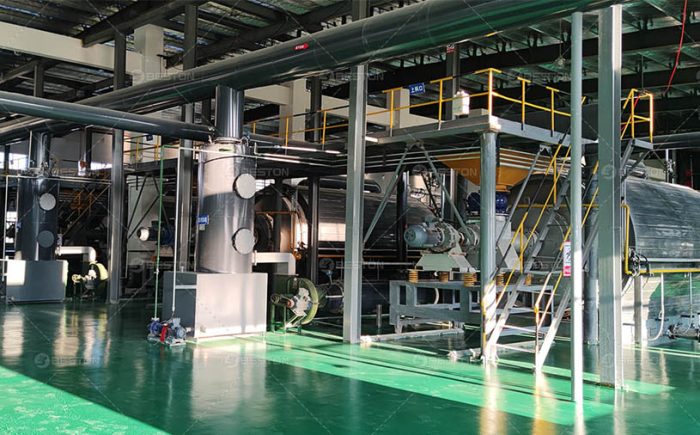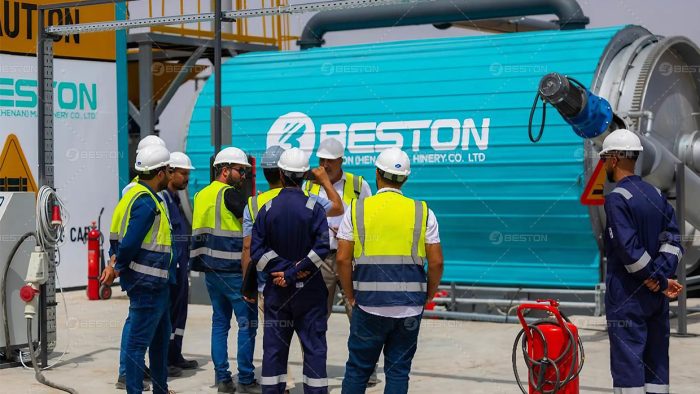The burgeoning concern over environmental sustainability has accentuated the need for effective waste management strategies, particularly in the context of oil sludge. Oil sludge, a byproduct of the oil extraction and refining processes, poses significant environmental challenges. Fortunately, advancements in pyrolysis technology offer a promising solution. This article explores the environmental benefits of oil sludge pyrolysis recycling, emphasizing its role in mitigating ecological damage and promoting sustainability.

Understanding Oil Sludge Pyrolysis
Oil sludge is a complex mixture of hydrocarbons, heavy metals, and other contaminants that accumulate during the processing of crude oil. Traditionally, the disposal of oil sludge has been fraught with environmental risks, including soil and water contamination. Pyrolysis, a thermal decomposition process carried out in the absence of oxygen, offers a transformative approach to managing this hazardous waste.
An oil sludge pyrolysis plant for sale is designed to convert oil sludge into valuable byproducts through high-temperature processing. This technology not only reduces the volume of waste but also recycles it into useful materials such as biochar, oil, and gas. The process involves heating the sludge in a controlled environment to break down its complex components, resulting in the production of cleaner and more manageable byproducts.
Reduction of Environmental Pollution
One of the primary environmental advantages of oil sludge pyrolysis is its capacity to significantly reduce pollution. Traditional disposal methods, such as landfilling or incineration, can lead to leachate formation, air pollution, and greenhouse gas emissions. In contrast, the pyrolysis process effectively mitigates these issues by converting oil sludge into non-toxic byproducts.
Minimization of Leachate Formation
Leachate, a liquid that percolates through landfilled waste, can contain harmful contaminants that pose risks to groundwater and soil. Oil sludge, when improperly managed, can generate leachate containing toxic compounds. Pyrolysis circumvents this issue by stabilizing the waste material through thermal decomposition, thereby preventing the generation of leachate.
Reduction of Air Pollutants
Incineration of oil sludge releases various pollutants, including particulate matter, carbon monoxide, and volatile organic compounds. Pyrolysis, on the other hand, operates in an oxygen-free environment, which minimizes the production of these harmful emissions. The process captures and reuses the gases generated during pyrolysis, reducing the potential for air pollution.
Resource Recovery and Utilization
Pyrolysis not only addresses waste management concerns but also facilitates resource recovery. The byproducts of the thermal desorption system—solid, oil, and gas—have significant industrial and commercial applications.
Valuable Oil Extraction
The oil extracted during pyrolysis can be refined and utilized as a valuable resource. This recovered oil can be used as a substitute for conventional fossil fuels or further processed into various industrial products. By recycling oil sludge into usable oil, the pyrolysis process reduces the reliance on virgin petroleum resources.
Gas Utilization
The gaseous byproducts of pyrolysis, primarily methane and carbon dioxide, can be harnessed for energy production. These gases can be used to generate electricity or heat, reducing the reliance on external energy sources. This utilization of pyrolysis gases contributes to a more sustainable energy system.
Mitigation of Soil and Water Contamination
Oil sludge contains hazardous substances that can leach into the soil and contaminate water sources if not managed properly. Pyrolysis offers a solution to this problem by transforming the sludge into non-harmful byproducts.
Soil Protection
The stabilization of oil sludge through pyrolysis minimizes the risk of soil contamination. The solid residue left after pyrolysis, including biochar, does not pose the same environmental risks as untreated sludge. This ensures that the soil remains free from harmful contaminants, promoting a healthier ecosystem.
Water Resource Preservation
Water contamination is a significant concern with traditional sludge disposal methods. Pyrolysis reduces the potential for water pollution by converting the sludge into non-toxic byproducts. The absence of leachate formation and the controlled handling of pyrolysis gases further protect water resources from contamination.
Energy Efficiency and Sustainability
The energy demands of waste management technologies are a critical consideration in their environmental impact. The continuous pyrolysis plant stands out as an energy-efficient solution compared to other methods of sludge disposal.
Energy Recovery
The energy content of oil sludge is partially recovered during the pyrolysis process. The production of pyrolysis gas and the recovery of oil contribute to a reduction in the overall energy consumption associated with waste management. This energy recovery aspect of pyrolysis enhances its sustainability profile.
Reduced Carbon Footprint
By diverting oil sludge from landfills and incineration, pyrolysis reduces the carbon footprint associated with waste disposal. The process decreases greenhouse gas emissions by capturing and utilizing pyrolysis gases, thereby contributing to climate change mitigation efforts.

Challenges and Future Prospects
While the environmental advantages of oil sludge pyrolysis are substantial, the technology is not without its challenges. High initial costs and the need for specialized equipment can be barriers to widespread adoption. However, ongoing advancements in pyrolysis technology and decreasing production costs are expected to enhance its feasibility and accessibility.
Technological Innovations
Continuous research and development in pyrolysis technology are addressing existing challenges and improving efficiency. Innovations such as advanced catalysts, optimized reaction conditions, and improved waste feedstock handling are paving the way for more effective and economical pyrolysis processes.
Policy and Regulation
Supportive policies and regulations can play a crucial role in promoting the adoption of oil sludge pyrolysis. Governments and regulatory bodies can incentivize the use of pyrolysis technology by providing financial support, setting standards for waste management, and encouraging research into sustainable practices.
Conclusion
The environmental advantages of oil sludge pyrolysis recycling are profound and far-reaching. By reducing pollution, recovering valuable resources, and mitigating soil and water contamination, pyrolysis represents a significant advancement in waste management technology. As the industry continues to evolve and address existing challenges, the role of oil sludge pyrolysis plant in promoting sustainability and environmental protection is likely to expand. The continued development of pyrolysis technology and supportive regulatory frameworks will be essential in realizing its full potential and contributing to a more sustainable future. Contact Beston Company for solutions